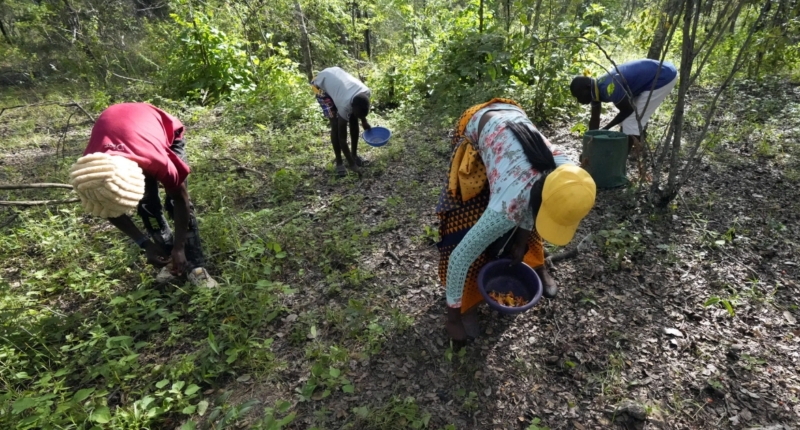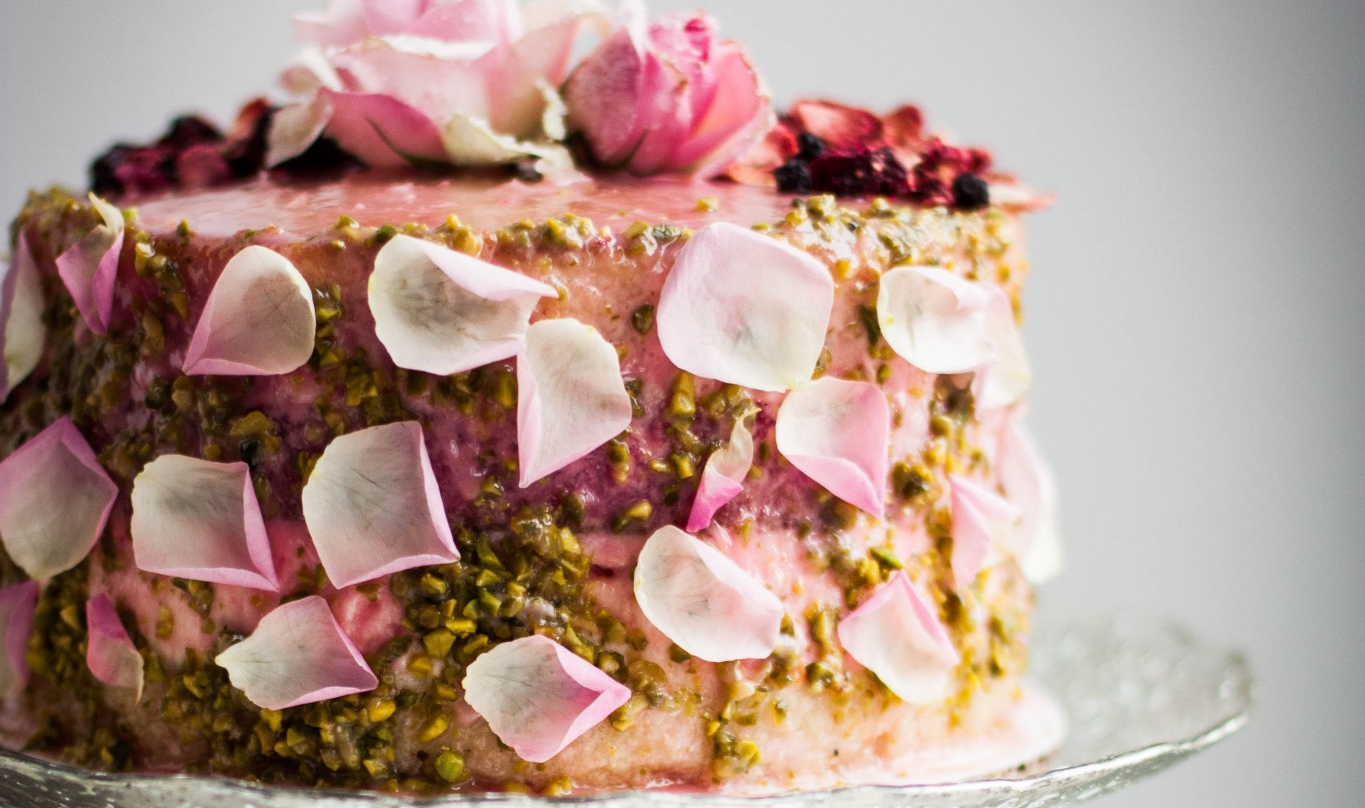Wild mushrooms are an important source of income and food for many families in Zimbabwe, where poverty and food insecurity are rampant. Many families in Binga, a district in western Zimbabwe, rely on wild mushrooms since growing maize is difficult due to droughts and poor land quality. Women and their daughters are the primary gatherers of mushrooms in Zimbabwe, and they have developed indigenous knowledge that enables them to distinguish edible mushrooms from poisonous ones. Wild mushrooms are a revered delicacy in Zimbabwe, and on average, each family earns just over $100 per month from selling wild mushrooms, in addition to consuming them at home. Despite the government’s promotion of small-scale commercial production of mushrooms such as oyster mushrooms, the wild ones remain the most popular. Beauty Waisoni, a Harare trader, has been selling wild mushrooms for years, and they have helped her put her children through school and weather harsh economic conditions. Mushrooms are cleaned and sold to passing motorists by traders who compete vigorously for sales.
Women in Zimbabwe Earn Income Through Foraging for Wild Mushrooms
During Zimbabwe’s rainy season, many rural families feast upon wild mushrooms that grow in abundance and sell them to earn extra income. However, eating poisonous fungi poses a significant risk, with reports of fatalities each year. As a result, the knowledge of identifying safe mushrooms has been passed down through generations from mothers to daughters.
Women, mainly working with their children, are the primary foragers of wild mushrooms in Zimbabwe. They typically trek to forests at dawn to collect mushrooms, and identify edible mushrooms by breaking them and observing the milk-like liquid that oozes out. They also scrutinize the color beneath and the top of the mushrooms and look for good collection points, such as anthills, areas near certain types of indigenous trees, and decomposing baobab trees.
Discerning between safe and toxic mushrooms has become an inter-generational transfer of indigenous knowledge that is crucial for survival. Rich in protein, antioxidants, and fiber, wild mushrooms are a highly valued delicacy and income earner in Zimbabwe, where food and formal jobs are scarce for many.
According to research conducted by the Marondera University of Agricultural Science and Technology, about one in four women who forage for wild mushrooms are often accompanied by their daughters. Mothers rarely bring along boys, with only 1.4% of cases involving sons. Police frequently issue warnings regarding the hazards of consuming wild mushrooms. In January, three girls in one family died after eating poisonous mushrooms, while a few years ago, ten family members died after consuming poisonous mushrooms.
Women such as Beauty Waisoni, who started picking wild mushrooms as a young girl, are prominent players in Zimbabwe’s mushroom trade. Waisoni teaches her 13-year-old daughter Beverly how to identify safe mushrooms, stressing the importance of avoiding fatal outcomes, which could harm their business and endanger lives.
The ability to forage for wild mushrooms, a skill passed down from mothers to daughters, has become a critical aspect of life for many rural families in Zimbabwe. The mushroom trade provides an important source of income and nourishment for those who engage in it. However, the risks associated with consuming wild mushrooms underscore the importance of knowledge and experience in discerning between safe and toxic varieties.
Wild Mushrooms Provide Critical Source of Income and Nourishment in Zimbabwe
In western Zimbabwe, where growing maize is largely unviable due to droughts and poor land quality, mushroom season is crucial for many families who rely on the fungi for their own household food consumption and to sell for additional income. A recent study found that mothers are better at identifying edible wild mushrooms than fathers, highlighting the importance of knowledge and experience in the foraging process. On average, each family in the district of Binga made just over $100 per month from selling wild mushrooms, a significant source of income for those who are too poor to afford basic necessities.
Zimbabwe has one of the highest rates of food inflation in the world at 264%, with about a quarter of the population being food insecure due to harsh weather conditions. The government is promoting small-scale commercial production of certain types of mushrooms, such as oyster mushrooms, to promote safe consumption and year-round income generation. However, wild mushrooms remain the most popular due to their unique aroma and taste.
Wild mushroom foragers, primarily women, start their day early in the morning, collecting mushrooms from the forest before cleaning and selling them along busy highways. Mushroom sellers compete for passing motorists, with many relying on the knowledge passed down from mothers to daughters to distinguish between safe and poisonous varieties. Despite the risks associated with consuming wild mushrooms, such as fatalities reported each year, many motorists are still drawn to the delicacy and rely on sellers to ensure the safety of the product.
The ability to forage for wild mushrooms and sell them for income has become a critical aspect of life for many rural families in Zimbabwe. The mushroom trade provides an important source of income and nourishment for those who engage in it. While small-scale commercial production of certain mushroom varieties is being promoted, wild mushrooms remain the most popular due to their unique flavor and scent.
Zimbabwe’s rainy season brings a bonanza of wild mushrooms, which many rural families feast upon and sell to boost their incomes. Despite the risks associated with consuming wild mushrooms, the trade remains an important source of income and nourishment for many families in Zimbabwe.
Zimbabwe’s Wild Mushroom Trade: A Delicacy and an Income Source
Zimbabwe’s rainy season brings a bonanza of wild mushrooms, which many rural families feast upon and sell to boost their incomes. The trade of these wild mushrooms, however, comes with inherent risks as each year there are reports of people dying after consuming poisonous fungi. To avoid such a deadly outcome, an inter-generational transfer of indigenous knowledge from mothers to daughters has evolved over time. These women, who are primarily responsible for foraging wild mushrooms, are dominant players in Zimbabwe’s mushroom trade.
Rich in protein, antioxidants and fiber, wild mushrooms are a revered delicacy and income earner in Zimbabwe, where food and formal jobs are scarce for many. Despite the risks, women such as Beauty Waisoni, who has been picking wild mushrooms since she was a young girl, trek to forests and comb through the morning dew with their daughters for hours.
To distinguish between safe and toxic mushrooms, women break them and detect “milk-like liquid oozing out” while scrutinizing the color beneath and the top of the mushrooms. They also look for good collection points such as anthills, the areas near certain types of indigenous trees and decomposing baobab trees.
According to research carried out by Wonder Ngezimana and colleagues at Marondera University of Agricultural Science and Technology, about one in four women who forage for wild mushrooms are often accompanied by their daughters, whereas in “just few cases” — 1.4% — mothers were accompanied by a boy child. The researchers noted that mothers were more knowledgeable about wild edible mushrooms compared to their counterparts — fathers.
The wild mushroom trade provides an important source of income and nourishment for many rural families in Zimbabwe. On average, each family in the Binga district made just over $100 per month from selling wild mushrooms, a significant source of income for those who are too poor to afford basic necessities. Many families in the Binga are too poor to grow Zimbabwe’s staple food, maize, due to droughts and poor land quality. The mushroom trade helps these families to survive during harsh economic conditions.
The trade of wild mushrooms, however, remains risky. Reports of fatalities due to consuming poisonous mushrooms filter through each season. In January, three girls in one family died after eating poisonous wild mushrooms. Police routinely warn people of the hazards of consuming wild mushrooms.
To promote safe mushroom consumption and year-round income generation, the government is promoting small-scale commercial production of certain types such as oyster mushrooms. Despite this, the wild ones remain the most popular due to their unique aroma and taste.
In conclusion, Zimbabwe’s wild mushroom trade is a critical aspect of life for many rural families, providing an important source of income and nourishment. Women, who are primarily responsible for foraging, transfer indigenous knowledge from one generation to the other, ensuring safe mushroom consumption. However, the trade remains risky, and the government is promoting small-scale commercial production to promote safe consumption and year-round income generation.
Wild Mushrooms: A Valuable Resource for Zimbabwe’s Food-Insecure Families
Zimbabwe’s rainy season brings with it a bounty of wild mushrooms, providing a source of income and sustenance for many rural families. However, the dangers of consuming poisonous mushrooms have led to an inter-generational transfer of indigenous knowledge from mothers to daughters, who are better equipped to discern between safe and toxic varieties.
Women are the dominant players in Zimbabwe’s mushroom trade, with mothers passing down their knowledge of identifying edible mushrooms to their daughters. Wild mushrooms are a revered delicacy in Zimbabwe, and in a country where food and formal jobs are scarce for many, they provide a valuable source of income. On average, each family earns just over $100 per month from selling wild mushrooms, in addition to relying on them for their own household food consumption.
Zimbabwe’s harsh weather conditions have left a quarter of its 15 million people food insecure, and the country has one of the world’s highest rates of food inflation at 264%. To promote safe mushroom consumption and year-round income generation, the government is promoting small-scale commercial production of certain types such as oyster mushrooms. However, wild mushrooms remain the most popular due to their superior flavor and aroma.
The wild mushrooms have helped traders like Beauty Waisoni weather the harsh economic conditions that have battered Zimbabwe for the past two decades. Waisoni, who has been picking wild mushrooms since she was a young girl, wakes up at dawn and heads to the forest with her 13-year-old daughter, Beverly, as her apprentice. They comb through the morning dew for shoot-ups under trees and dried leaves, looking for good collection points such as anthills, the areas near certain types of indigenous trees, and decomposing baobab trees.
To avoid the deadly consequences of consuming poisonous mushrooms, Waisoni teaches her daughter how to identify safe mushrooms. Other women use similar techniques, distinguishing between edible and poisonous mushrooms by breaking them and detecting “milk-like liquid oozing out” and scrutinizing the color beneath and on top of the mushrooms.
Despite the risks involved, the wild mushroom trade remains a valuable resource for Zimbabwe’s food-insecure families. With the government promoting small-scale commercial production, Zimbabweans can benefit from both safe mushroom consumption and year-round income generation, which could help to alleviate the country’s widespread food insecurity.
Don’t miss interesting posts on Famousbio










